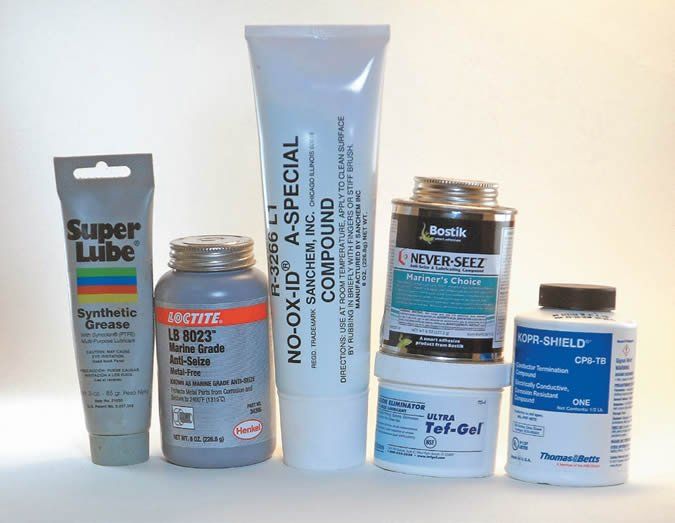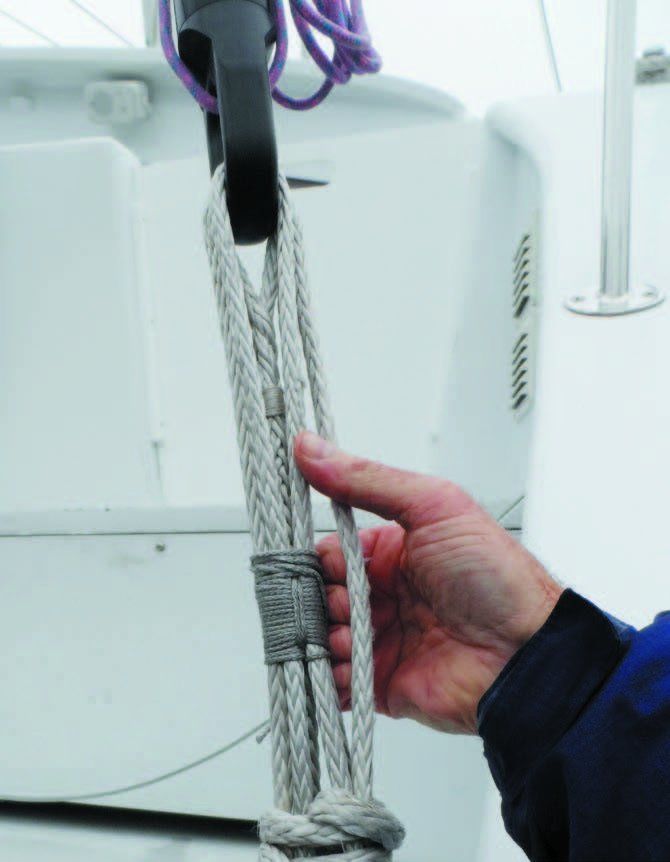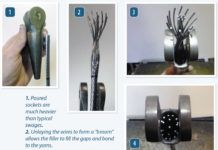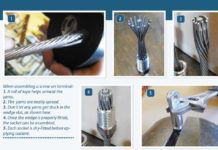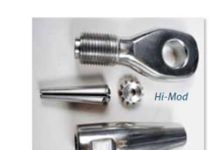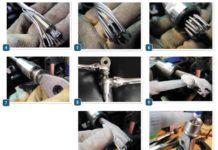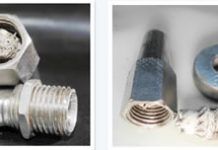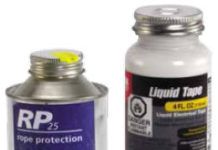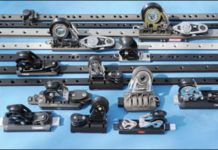Poured-Socket Assembly Requires Special Care
The most common error with poured sockets is insufficient cleaning of the wire, and/or using the wrong solvent to clean it. Even dry, stainless wire, when new, can have a residue of lubricant left over from the extrusion process. If this lubricant is not removed, it can compromise the adhesion of the wire yarns to the filler material in the socket.
Methods to Mess Up Your Screw-on Terminals
All of the mechanical terminals we tested are based on the same assembly concept: The rigger opens the cover yarns, and then slides a wedge over the core yarns, near the end of the wire. The rigger closes the cover yarns over the wedge, and then, screws together the two outer parts of the terminal over the wedge, compressing the material, and thus generating friction. Simple, but like any assembly, it can be done wrong. Here are a few things to watch out for when assembling a mechanical terminal.
Screw-on Rigging Terminals
Standing rigging has been evolving ever since natural fiber lines were lashed, knotted, or spliced to wooden spars, and led down to crudely fashioned, iron deck hardware. The challenge has always been the transition point where the straight-line pull (tension) changes direction, creating a stress riser in the rope, wire, or rod. Today, the materials have changed, but the challenge remains the same.
Step By Step: Threaded Terminal Fittings
Each manufacturer offers specific guidance for terminal assembly, and some do a better job than others. The following is a generic description of the assembly process using a Norseman fitting as an example. The other two fittings in our comparison, the Sta-Lok and the Hi-Mod, incorporate a third component, a crown that helps guide and hold the wire strands in place.
A Decade-long Norseman Fitting Sea Trial
A couple of months ago, PS Technical Editor Ralph Naranjo disassembled a headstay that he had used aboard his Ericson 41 sloop, Wind Shadow, for nearly a decade. It was set up with Norseman fittings as terminals for 3/8-inch diameter, 1x19 stainless-steel wire that had supported a Harken roller-furling system. During disassembly, neither the wire nor the end fittings showed signs of corrosion or physical wear. And when the fittings themselves were taken apart-requiring heat to free the sealant in the terminal-the wire bundle was pristine and showed no sign of any slippage or corrosion.
UV, Chafe Protection
Last fall, we reported on how to build strong, hand-stitched eyes in the ends of a rope, a skill particularly useful for older halyards and sheets that are too stiff for a typical bury splice (see PS October 2014 online). We also warned against the ravages of ultraviolet rays (UV) and chafe on the stitching, since so much of the strength lies vulnerable on the surface. In this report, we look at means of protecting stitched splices from UV and chafe.
Abrasion and Break Testing
Testers first task was to determine whether any of these coatings could weaken line in the near term. To do this, we formed 20-inch loops of 1/8-inch polyester braid and nylon braid, coated a 1-inch length of the loop with each of the products, and broke these in our test rig.
Survey: Mainsail Track Hardware
Its been almost 10 years since Practical Sailor weighed in specifically on mainsail track hardware. (See Practical Sailor, Feb. 1, 2005 online) At the time, we offered a summary of the products designed to manage what we termed the three Ss of mainsail handling-setting, shortening, and striking. In that article, we focused on the gear used with full-battened mainsails, which were becoming increasingly popular among a broad spectrum of sailboat owners then.
Genoa Sheet-Lead Control Systems
For decades, adjusting the genoa sheet leads from the cockpit was a luxury ascribed to racing sailboats. But todays cruising sailboat equipped with a roller-furling headsail also benefits from an efficient, safe means of adjusting the genoa sheets lead angle. We tested 11 genoa sheet-lead cars and tracks from the top manufacturers of sailboat deck hardware: Antal, Garhauer, Harken, Nautos, Ronstan, Schaefer, and Selden. Testers looked at the genoa-sheet controls operational efficiency, design and attributes, construction quality, and ease of installation; price and warranty were also considered.
Where Credit Is Due: September 2013
Alpenglow I would like to take this opportunity to express my gratitude to (and recommendation of) the folks at Alpenglow Lights (www.alpenglowlights.com). We have many of their fixtures and have contacted the company on numerous occasions for new sales, upgrades, and technical questions. Without fail, they have exceeded our expectations, from offering to perform upgrades at minimal cost, to telling us secret workarounds that enabled us to use locally sourced parts and supplies to re-invigorate their excellent lighting units.

































